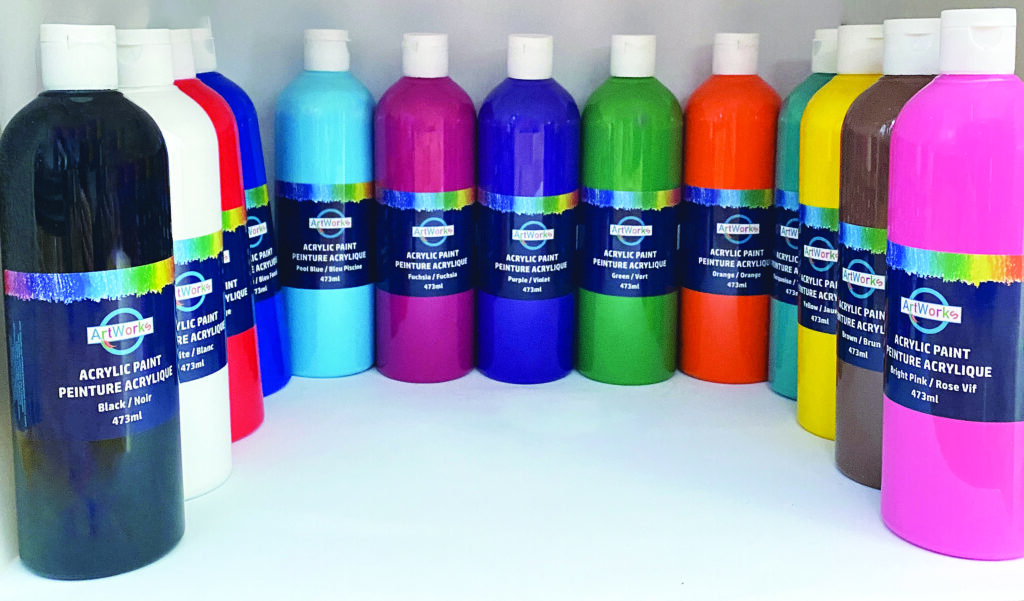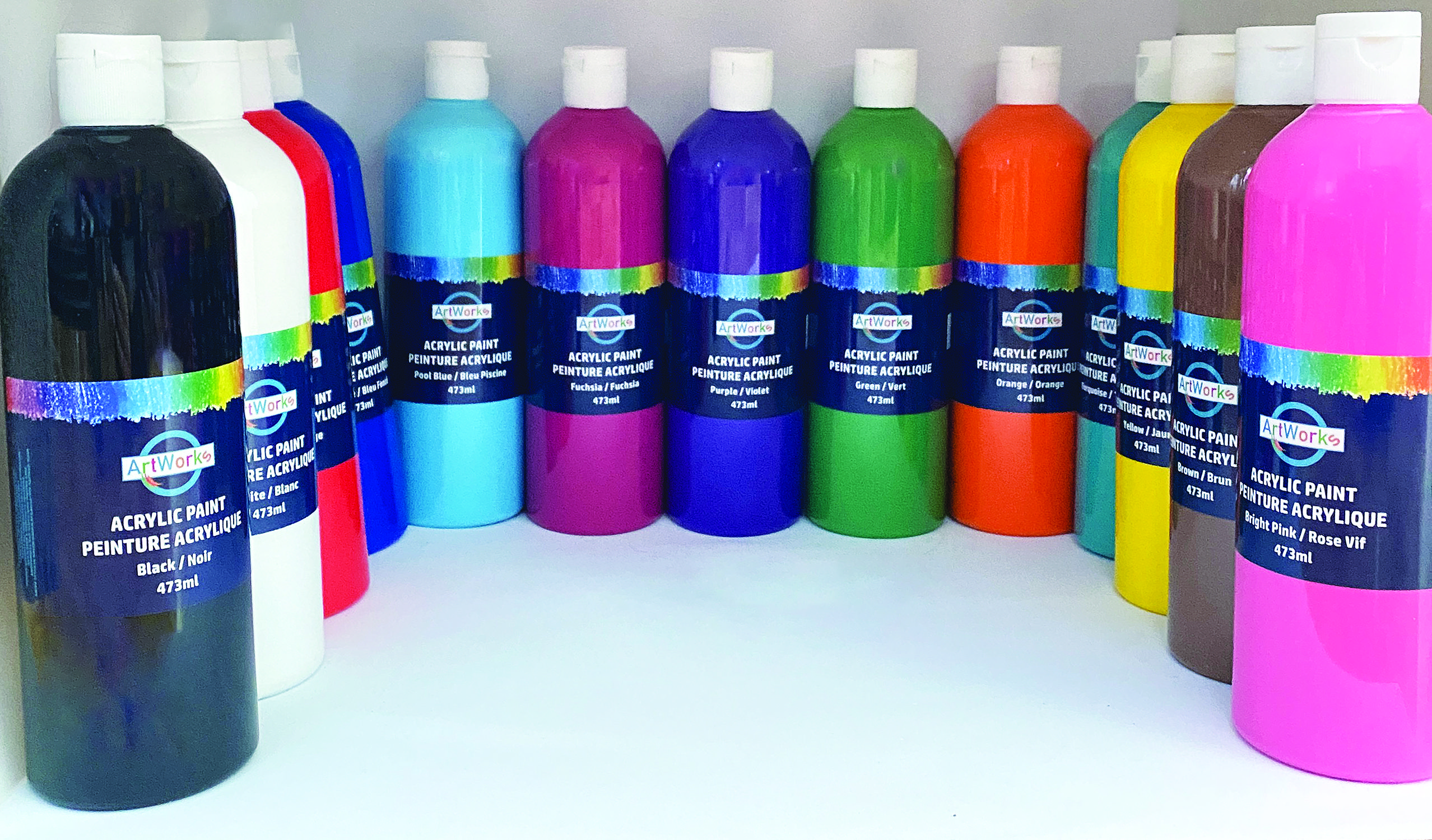
Unlocking the Enduring Allure of Permanent Blue Acrylic Paint
For artists of all levels, from beginners experimenting with color to seasoned professionals crafting masterpieces, permanent blue acrylic paint stands as a cornerstone of the palette. Its vibrant hue, versatility, and exceptional durability make it a favorite for a wide range of artistic endeavors. But what exactly makes a blue paint “permanent,” and why is it so crucial for artists seeking longevity in their work? This article delves into the fascinating world of permanent blue acrylic paint, exploring its composition, characteristics, applications, and offering insights into selecting the best option for your artistic needs.
Understanding Permanence in Acrylic Paints
The term “permanence” in the context of art supplies refers to a paint’s resistance to fading, discoloration, or degradation over time when exposed to light, moisture, and other environmental factors. This is a critical factor for artists aiming to create artwork that will last for generations. Acrylic paints, in general, are known for their excellent permanence compared to other mediums like watercolors or oils. However, not all acrylic paints are created equal. The permanence of a particular paint depends primarily on the quality of the pigments used and the formulation of the acrylic polymer emulsion.
Pigments are rated for lightfastness, usually on a scale of I to V, with I being the most lightfast and V being the least. Paints labeled as “artist grade” or “professional grade” typically use pigments with a lightfastness rating of I or II, ensuring excellent permanence. Student-grade paints may use lower-quality pigments with poorer lightfastness, which can lead to fading or discoloration over time. Therefore, when selecting permanent blue acrylic paint, it’s essential to check the lightfastness rating on the label.
The Chemistry Behind Permanent Blue Acrylic Paint
Permanent blue acrylic paint derives its color from various blue pigments, each possessing unique characteristics in terms of hue, transparency, and lightfastness. Some of the most common and highly permanent blue pigments used in acrylic paints include:
- Phthalo Blue (PB15, PB15:3, PB15:4): Known for its intense, vibrant, and highly staining properties, Phthalo Blue is a synthetic organic pigment offering excellent lightfastness and tinting strength. It’s available in various shades, from a greenish blue to a reddish blue.
- Ultramarine Blue (PB29): A synthetic inorganic pigment, Ultramarine Blue offers a rich, deep blue hue with excellent lightfastness. It’s known for its slightly granular texture and is a popular choice for landscapes and skies.
- Cerulean Blue (PB35): A cobalt-based pigment, Cerulean Blue provides a light, airy, and slightly greenish blue. It’s valued for its excellent lightfastness and opacity, making it ideal for skies and water.
- Cobalt Blue (PB28): Another cobalt-based pigment, Cobalt Blue offers a clean, vibrant blue with excellent lightfastness. It’s slightly warmer than Cerulean Blue and is often used for skies, water, and other applications where a bright, pure blue is desired.
These pigments are dispersed within an acrylic polymer emulsion, which acts as a binder, holding the pigment particles together and adhering them to the painting surface. The quality of the acrylic polymer emulsion also plays a role in the overall permanence of the paint. High-quality emulsions are resistant to cracking, yellowing, and other forms of degradation, ensuring the long-term stability of the artwork.
Applications of Permanent Blue Acrylic Paint
Permanent blue acrylic paint is incredibly versatile and can be used for a wide range of painting techniques and applications. Its fast-drying nature allows for layering and glazing, while its water-based formulation makes it easy to clean up. Some common applications include:
- Landscapes: Blue hues are essential for depicting skies, water, and distant mountains in landscape paintings. Permanent blue acrylic paint, such as Ultramarine Blue or Cerulean Blue, provides the perfect range of shades for capturing the beauty of the natural world.
- Seascapes: The vastness and depth of the ocean can be effectively conveyed using various shades of permanent blue acrylic paint. Phthalo Blue, in particular, is well-suited for capturing the intense blues of deep water.
- Portraits: While not always the primary color, blue can be used to create shadows, highlights, and subtle nuances in portrait paintings. A touch of permanent blue acrylic paint can add depth and complexity to skin tones.
- Abstract Art: Blue is a powerful color that can evoke a range of emotions, from calmness and serenity to intensity and drama. Permanent blue acrylic paint can be used to create striking abstract compositions that explore the expressive potential of color.
- Mixed Media: Acrylic paints are compatible with a wide range of other art materials, such as collage elements, inks, and pastels. Permanent blue acrylic paint can be incorporated into mixed media artworks to add color, texture, and visual interest.
Choosing the Right Permanent Blue Acrylic Paint
With so many different brands and shades of permanent blue acrylic paint available, it can be challenging to choose the right one for your needs. Here are some factors to consider:
- Lightfastness: As mentioned earlier, lightfastness is the most important factor to consider when selecting permanent blue acrylic paint. Look for paints with a lightfastness rating of I or II to ensure long-term stability.
- Pigment: Consider the specific pigment used in the paint. Each pigment offers a unique hue, transparency, and tinting strength. Experiment with different pigments to find the ones that best suit your artistic style and preferences.
- Brand: Reputable brands typically use higher-quality pigments and acrylic polymer emulsions, resulting in paints with superior permanence and performance. Research different brands and read reviews to find the ones that are well-regarded by artists.
- Viscosity: Acrylic paints are available in various viscosities, from fluid acrylics to heavy-body acrylics. Consider the type of painting techniques you plan to use and choose a viscosity that is appropriate for those techniques.
- Opacity/Transparency: Some blue pigments are naturally more opaque than others. Opaque blues are good for covering surfaces and creating solid blocks of color, while transparent blues are ideal for glazing and layering.
Tips for Using Permanent Blue Acrylic Paint
To get the most out of your permanent blue acrylic paint, consider these tips:
- Use a palette knife or brush to mix your paints. Avoid using your fingers, as this can contaminate the paint and affect its permanence.
- Thin your acrylic paints with water or an acrylic medium. This can help to improve their flow and transparency.
- Clean your brushes and palette with water immediately after use. Acrylic paints dry quickly and can be difficult to remove once they have hardened.
- Store your acrylic paints in a cool, dry place. Avoid exposing them to extreme temperatures or direct sunlight.
- Experiment with different techniques and approaches. Acrylic paints are a versatile medium that can be used in a variety of ways. Don’t be afraid to try new things and explore the possibilities.
The Enduring Legacy of Blue in Art
Blue has held a significant place in art history for centuries, often associated with royalty, spirituality, and the sublime. From the lapis lazuli used in ancient Egyptian art to the iconic blue hues of Renaissance masterpieces, blue pigments have consistently captivated artists and audiences alike. The availability of permanent blue acrylic paint has further democratized access to this essential color, empowering artists of all backgrounds to explore its expressive potential.
The development of synthetic blue pigments like Phthalo Blue and Ultramarine Blue revolutionized the art world by providing artists with more affordable and readily available alternatives to expensive natural pigments. These advancements have allowed for greater experimentation and innovation in art, contributing to the rich and diverse landscape of contemporary art.
The Future of Permanent Blue Acrylic Paint
As technology continues to advance, we can expect to see further improvements in the permanence, vibrancy, and versatility of permanent blue acrylic paint. Researchers are constantly exploring new pigment formulations and acrylic polymer emulsions that offer enhanced performance and longevity. Sustainable and eco-friendly alternatives are also gaining traction, reflecting a growing awareness of the environmental impact of art materials.
The future of permanent blue acrylic paint is bright, promising even greater opportunities for artists to create enduring works of art that capture the beauty and complexity of the world around us. Whether you’re a seasoned professional or just starting your artistic journey, exploring the world of permanent blue acrylic paint is a rewarding endeavor that can unlock new creative possibilities.
In conclusion, permanent blue acrylic paint is an indispensable tool for any artist seeking to create lasting and vibrant artwork. Its exceptional durability, versatility, and range of hues make it a perfect choice for a wide range of applications. By understanding the factors that contribute to permanence and selecting high-quality paints, you can ensure that your artwork will be enjoyed for generations to come. [See also: Acrylic Painting Techniques for Beginners] [See also: Best Brands of Acrylic Paint] [See also: Understanding Pigment Lightfastness]

